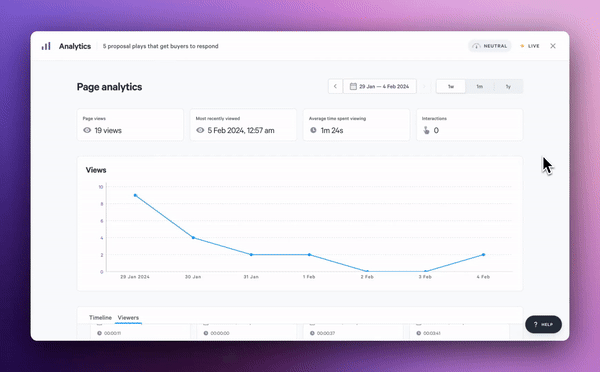In sales, time is money. The more deals you close, the more money you make. No one knows this better than a sales rep staring down the end of the quarter - just a deal or two away from exceeding their goal or making it into the President's club. Having the ability to sell with speed and efficiency can help push a good seller to great results.
This is where sales content analytics comes in. Having a way to understand what content helps win the deal, and what gaps of information or communication can slow down the sales process. We'll show you how sales content management and sales content analytics can help win more deals.
Key Takeaways
- The right content at the right time can help speed up the sales process or be the difference between winning and losing the deal.
- Having the right sales content analytics tools can show you how your content is performing.
- Understanding how content performs in a sales process can help sales reps optimize their content and share the right content at the right time.
What is sales content analytics?
Simply put, sales content analytics is the process of evaluating the effectiveness of content used in the sales process.
It provides insights into how and when content is shared, who consumes it, and how it influences revenue. Sales content analytics can help sales teams with:
- Creating more precise messaging that resonates with prospects and customers
- Tailored content for customer engagement
- An optimized content strategy
- Identifying and improving conversion paths
Why do high-performing teams track their sales content?
Tracking sales content may be the superpower of a high-performing team. Having something akin to content marketing analytics applied to sales content can help sales teams understand how their content is performing. They can quickly see what is working and what is not and adjust on the fly instead of waiting until the next prospect or sales cycle to try something new or make improvements to sales content. That said, there are many reasons teams track their sales content's performance, including:
Reason #1: Improve win rates
We have improved win rates as the number one reason because sales are about winning the deal. Understanding how content performance impacts or inhibits win rates is a good reason to watch it. Looking at the content sellers share at different points in the sales process and tying that back to how many deals are won or lost can help sales teams determine the right content to share at the right point in the sales process to win the deal.
For example, if sellers on your team are finding that sharing a document outlining pricing and package options early in the deal process can weed out the prospects who don't have the budget (or don't have the budget at this time) to focus on prospects who are ready to spend the cash can help increase in rates overall, they should continue to do that.
Reason #2: Minimize friction in the sales process
Anything a seller can do to avoid roadblocks in the sales process can help them on the road to winning the business they're after. Any time a seller can leverage content to minimize friction in the sales process is a win. Each time a deal stalls (for any reason) it adds risk of going closed lost (worst case scenario) or at least extends the sales cycle.
Understanding how sales content is performing and knowing what content to share and at what point in the sales cycle to keep it running smoothly is another point for using sales content analytics.
Reason #3: Share best practices across the team
One of my favorite mantras is, test, don't guess.This applies to sharing best practices across the sales team, too. By having analytics in place on sales content, not only can individual sellers understand how their content is performing across the sales cycle, but it can also help the whole team.
This allows the full team to take advantage of the collective knowledge and have data to back up what they're seeing. Have you ever sat in a sales meeting and listened to that one high performer drone on about what they're doing that they think is working? Sales content analytics takes it out of the anecdotal and puts data to the experience so everyone can see what is working and what is not (when it comes to sales content).
Reason #4: Know what sales content needs to be improved, retired, or maintained
Another one of those bad (but true) sales cliches is that what gets measured gets managed. So, it's critical that we're measuring and managing the right things. Just tracking your sales content is a good start, but tracking in a way that allows you to see what needs to be improved, what can possibly be retired, and what should remain status quo is better.
Sellers, sales enablement team members, and marketers should monitor content analytics and identify the most powerful pieces. If they're bringing in results, these may be good candidates for improvement or building on. Next, look at content that is rarely touched by the sales team or rarely looked at (or only looked at quickly) by a prospect or client. This content should most likely retire. Otherwise, it will need to be improved. And finally, is there any really dated content that sellers are still gravitating toward, even if it's getting dated? This is the content you should really focus on updating or improving.
Reason #5: Increase deal size
Another good reason to track your sales content is to use what you learn to increase your deal size. Sales content can be an asset in communicating the full value of the product suite, compelling prospects to sign on for a longer term, or even sharing some add-on services that make for a good upsell.
When tracking sales content, pay careful attention to how prospects are engaging with your service listings as well as the pricing options. You can even do some split testing (as marketing does) with different ways of presenting pricing to learn language or content types get you the biggest and best deals.
Sales content metrics to track
Now that we've thoroughly discussed why it's important to track your sales content, let's dive into the specifics of what you should be tracking. Setting up good tracking is important, and will help you collect data that tells the story. One thing to beware of when setting up your tracking is vanity metrics - these are metrics that might look nice, but they won't tell you what is or isn't working or why.
Metric #1: Overall page engagement
There is so much you can learn from overall page engagement. First off, are prospects even opening your proposals? If the answer here is no (even after some follow-ups), you're likely being ghosted, and you should consider the deal closed lost. You could always try to re-engage with this prospect later, but spending more time and energy on this right now would be a waste. Not opening proposals all the time is one of the biggest red flags a prospect can send you.
If your prospects are opening your proposals or documents, you should examine their page views, the average amount of time prospects spend viewing the document, and where (if anywhere) they click.
Metric #2: Viewers
Now, we're going to dig deeper into our viewers. We all know that in many organizations (especially in enterprise sales), decisions are made by larger buying committees. However, it's not uncommon for sellers to only get access to one or two members of the buying committee. So, having content analytics in place to help us know who is viewing the document will help us to better understand our buyers.
You should be able to tell where sessions are coming from (geography) as well as who across your buying committee is taking a look at the proposal and how often. For example, if you notice one person who keeps coming back, maybe they're actually your coach (or they could be engaged in that way) and the most supportive of your solution.
Another thing to keep an eye on when it comes to viewers is the engagement. Reps should be able to see if there is a drop off in engagement or if the account is warming up and more prospects are taking a look at the document or visiting key sections again.
Metric #3: Time Spent
Knowing who has viewed your content and when is good, but knowing where and how they're spending the time is even better. This is where the time spent metric comes into play. It can give you, as a seller, a lot of information about what sections of your content your prospects are spending the most time reading.
But knowing what they're looking at is only half of the equation. You may need to do some follow-up to find out why they're spending so much time in that section or specific content. For example, if your prospect is going back to your pricing table and hanging out there for a long time, it could mean that they are trying to do some complicated math and could use some support. Or, it could mean that they're in a meeting comparing your pricing table with several other proposals. So, knowing that they've been hanging out there for a long time is a good reason for some timely follow-up and to ask if they need another walkthrough on their investment and the value that you bring!
Sales analytics tools to help you
When it comes to sales content analytics, you don't have to go it alone! Many sales tools can help you easily set up tracking to get robust analytics and data. We rounded up some of the best sales tools (including yours truly) to show how they can give you the actionable data you need.
Tool #1: Qwilr - Sales content analytics
When it comes to sales content analytics, we have to toot our own horn. We have made some big updates to our analytics suite to give you the most robust and actionable data set - and we continue to improve.
When it comes to proposal tracking software, our built-in analytics capabilities tell you the full story.
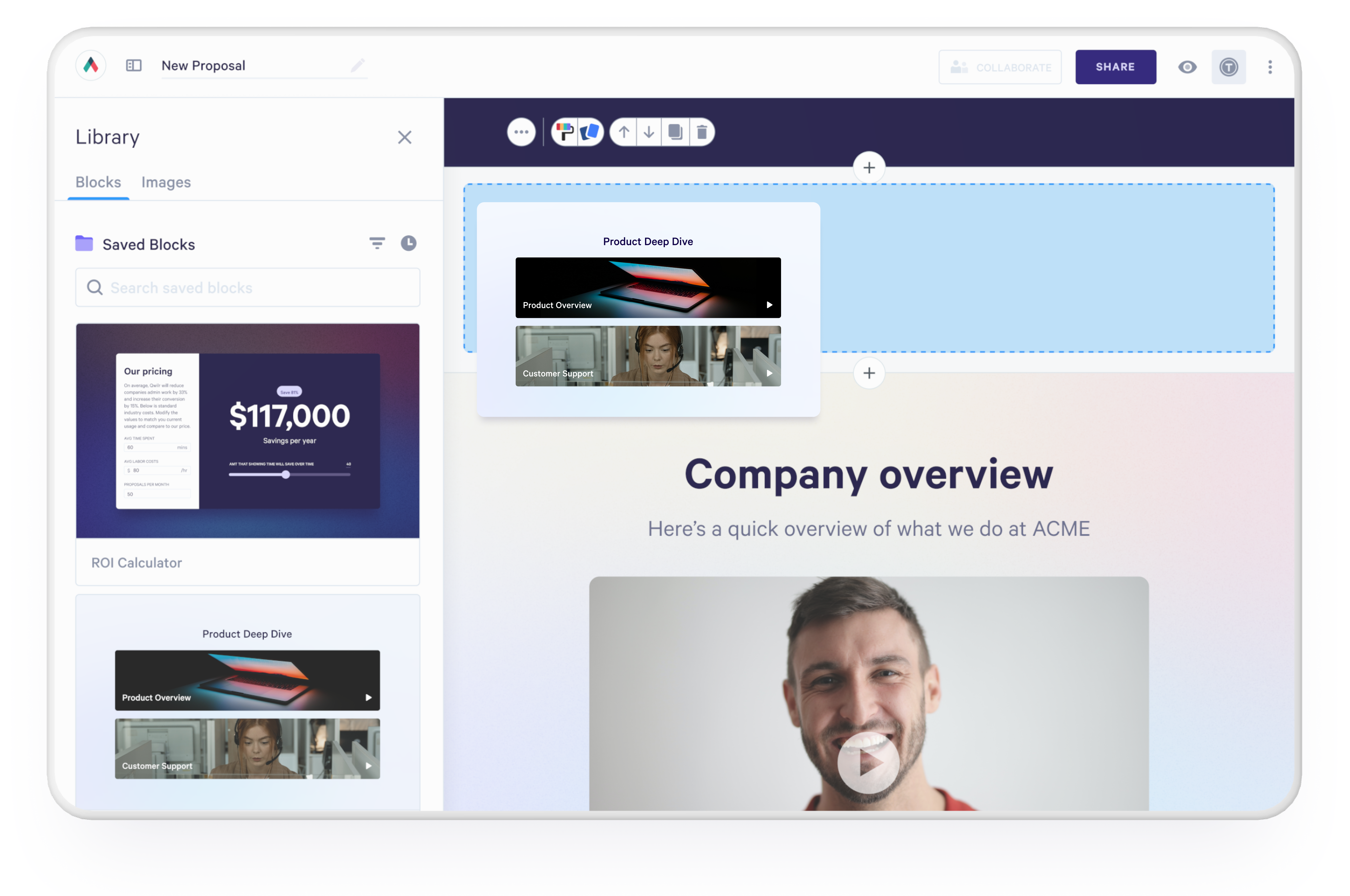
With Qwilr, you can see when your proposal was opened (and get a real-time notification), who opened it, where they are, and what they looked at. Having this much detailed information at your fingertips can help you follow up at that perfect moment with just the right piece of information or the next step.
Another component in our toolset is our proprietary engagement scoring. Qwilr's algorithm provides engagement scoring for your documents. This algorithm is customizable (by you) so that you can set the engagement algorithm to align with what you see is important and how you define engaged customers.
This way, you’re only measuring what matters most. For example, sales leaders can decide whether they want their sales team to focus on engaged deals or make sure they close. This feature allows you to define your specific focus and effectively systemize it for the rest of the sales team.
Tool #2: Gong - Sales conversation intelligence
When it comes to sales content analytics, it's not just about the words on the page. It's also about what happens in sales conversations like meetings and demos. To that end, adding Gong to your stack can be a huge asset. Understanding how your meetings and calls are part of the buyer enablement process can give you a really good and comprehensive picture of what is working and what is not.
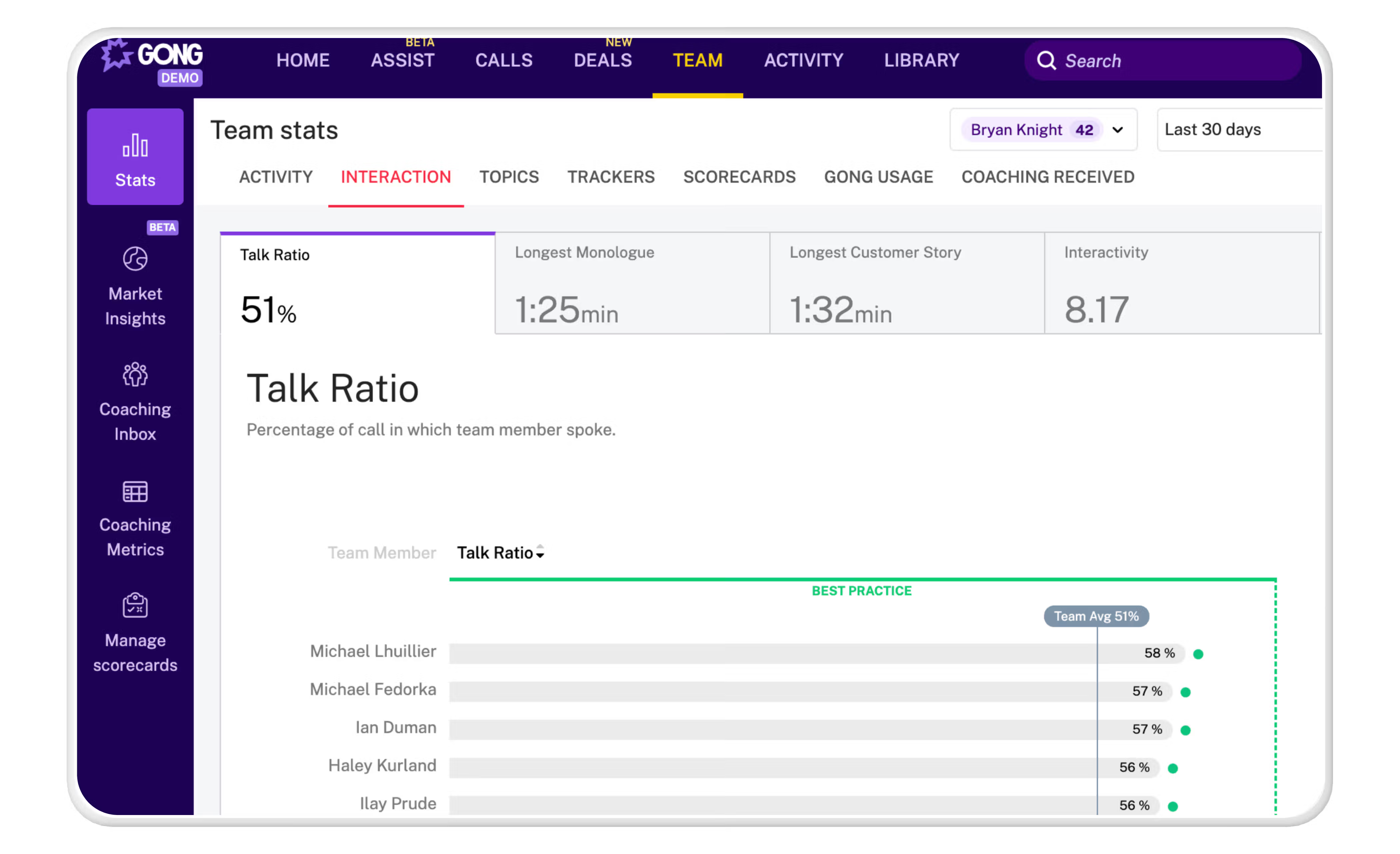
If you haven't used it, Gong is a tool used to provide sales conversation intelligence. It records calls and meetings and analyzes them to provide feedback to sellers. It can also help sales leaders coach their teams based on the insights it provides. David Ellis, a Sales Director, shared this testimonial, which the Gong team has placed front and center on their own website. He says, “Gong gave us the assurance that our reps were doing the right things during their discovery calls and demos. We’ve shortened our sales cycle to just 16 days and more than doubled our close rates.”
Tool #3: Salesforce and Hubspot - Overall sales analytics & reporting
An article on sales content analytics wouldn't be complete without mentioning at least a few CRM tools. When it comes to reporting and analytics, Salesforce and HubSpot reign supreme. These tools help sellers understand their sales performance more comprehensively. They allow sellers and sales leaders to look at the data from all of their deals and make better decisions about how to move forward. Whether that's prioritizing a certain type of client or changing up the steps in the sales or proposal process.
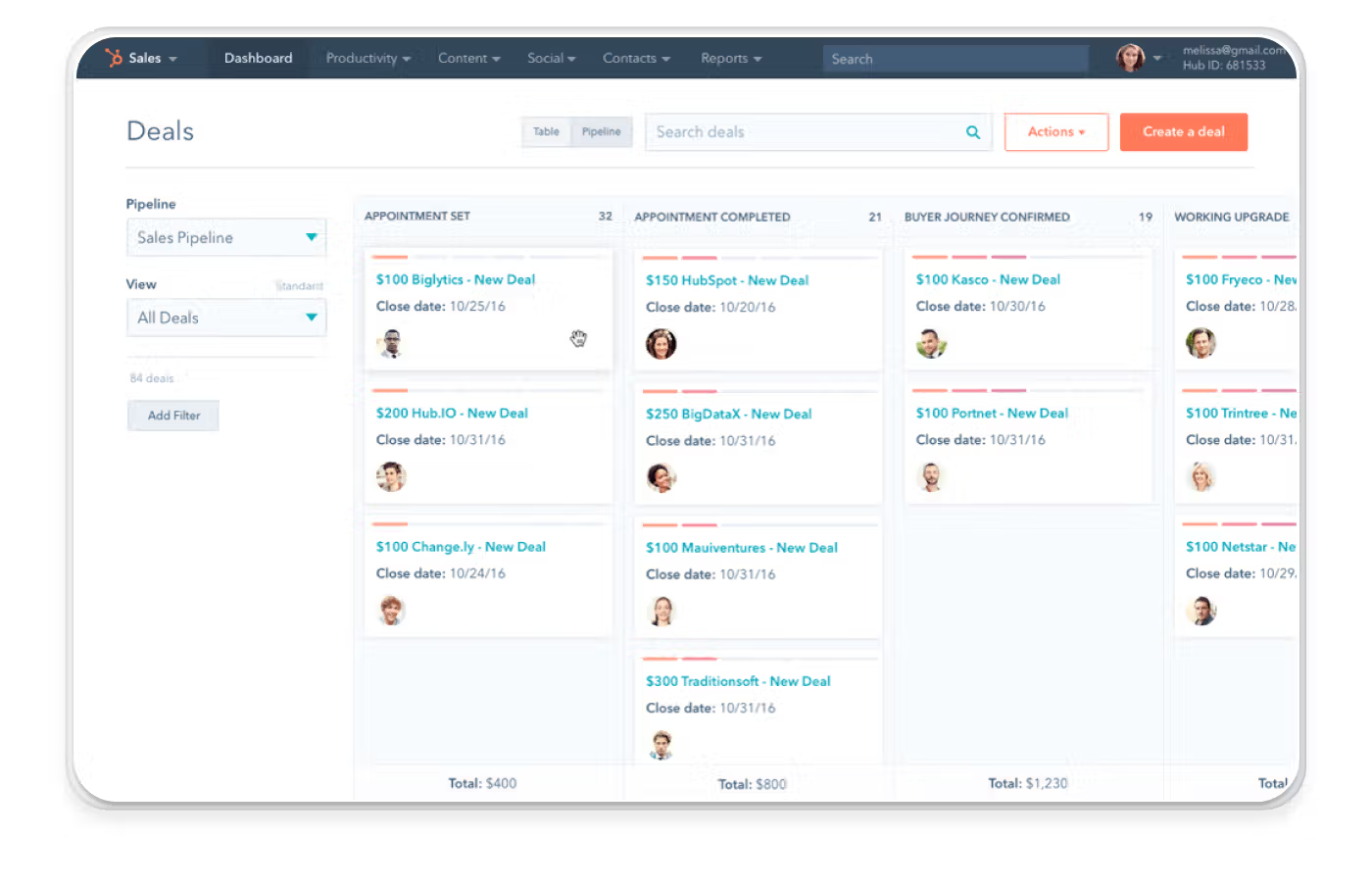
We could write a whole other article about CRM analytics so for now, we'll just leave it at the fact that you don't want to overlook your CRM when putting together your stack.
Tool #4: Clari - Deal Management, Forecasting, and More
According to Forrester's research, using Clari "makes your revenue team 80% more effective and delivers 448% ROI". No more time wasted with manual data entry, switching between apps, pulling reports, or missing action items. Clari surfaces reliable insights for reps and managers to take action quickly.
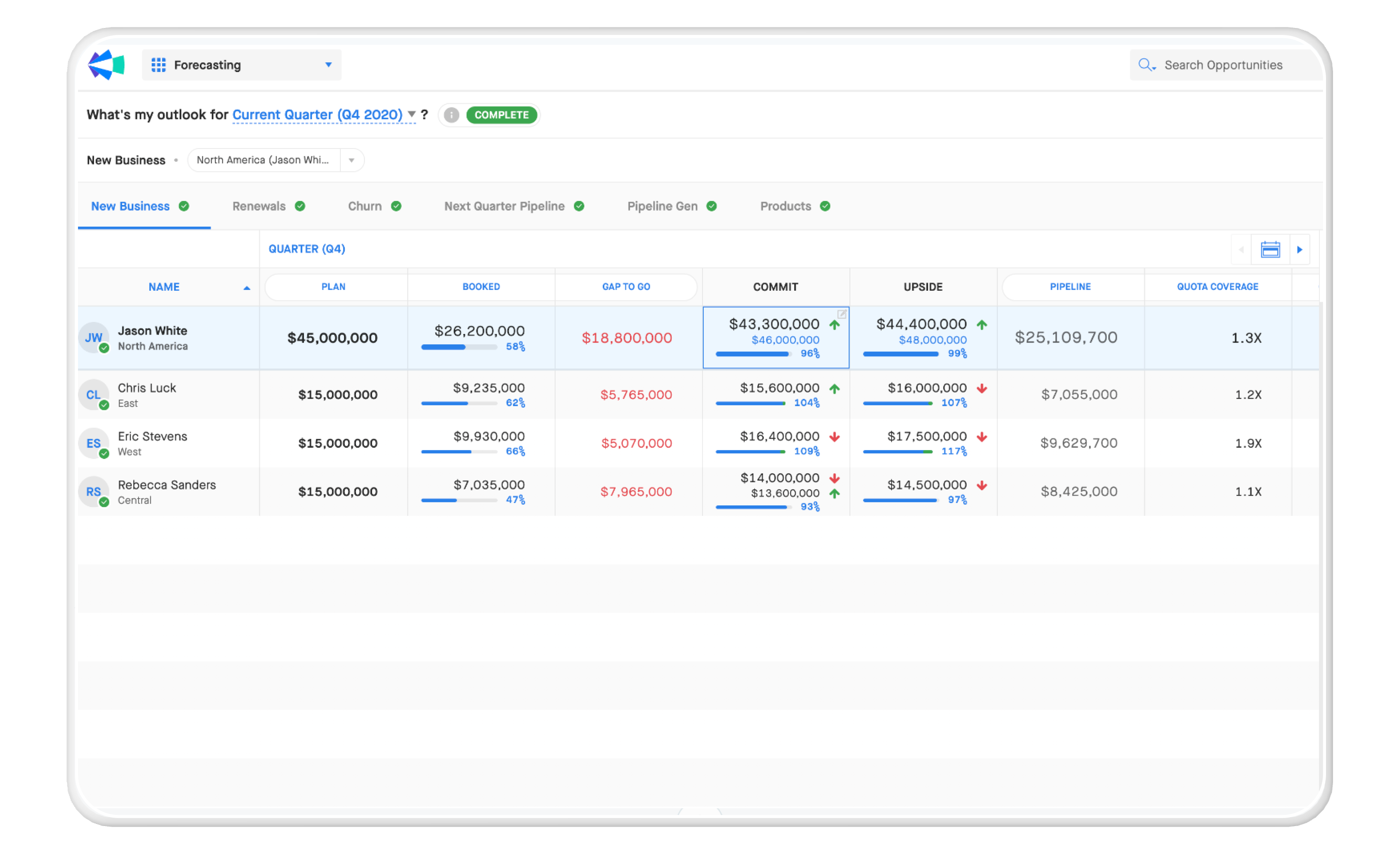
In addition to the ability to take swift action, Clari equips revenue leaders more visibility and insights which can lead to better, more accurate forecasting which can help businesses make better decisions earlier or at least in real time. Knowing when to staff up and focus on growth, or when to conserve resources and keep teams lean can be a game changer in business.
Tool #5: Outreach - Sales Engagement
When it comes to sales engagement, Outreach can help level the playing field between your best seller and the rest of the team. It allows you to design, measure and ultimately improve common workflows across the sales cycle.
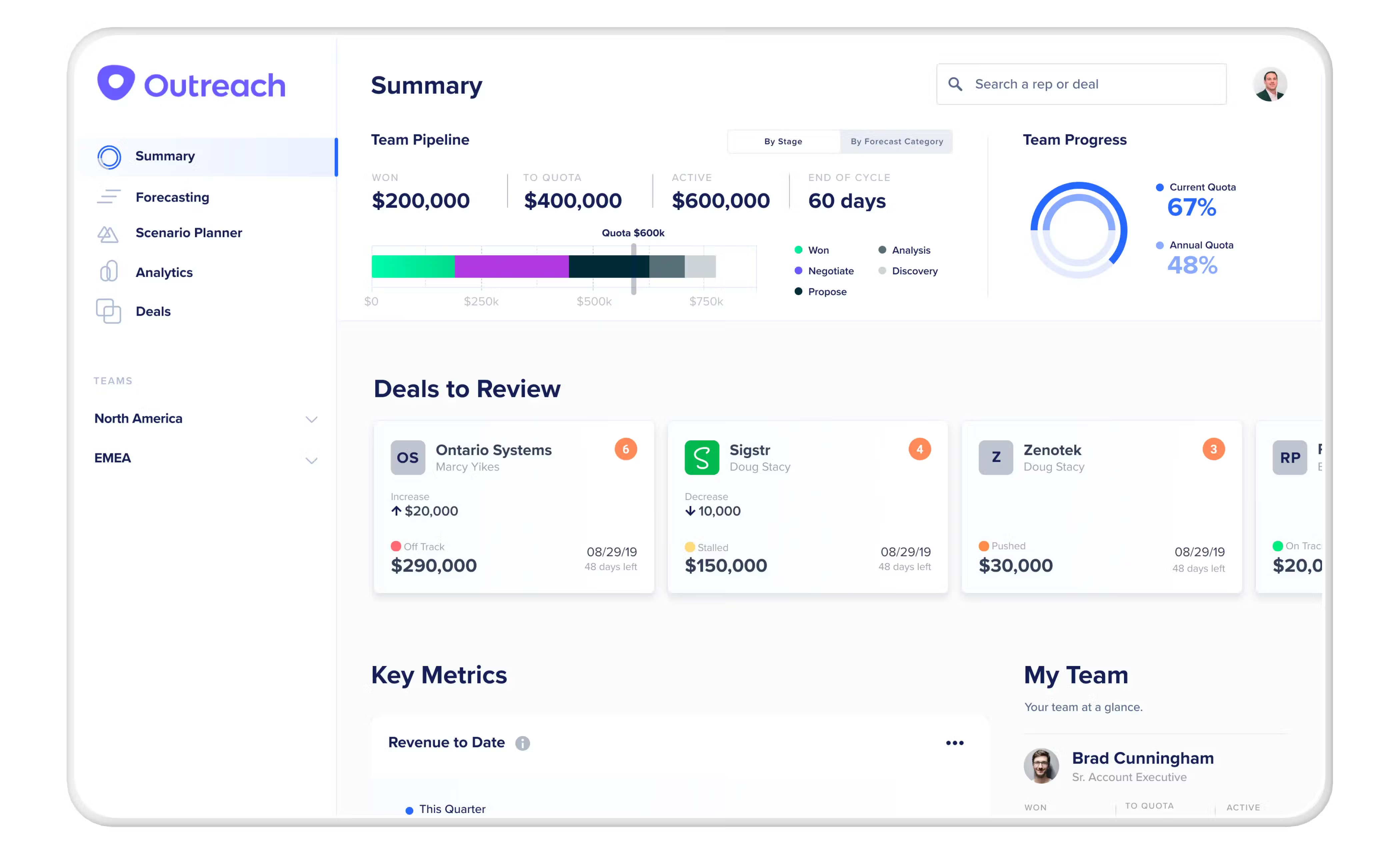
Another way to get data about what is working well in your sales process and seamlessly scale it across your sales team.
Outreach can leverage the power of artificial intelligence and data to help put together playbooks and sales sequences to create and engage your sales pipeline.
Final Thoughts
Sales analytics can truly be your super power. It can give you insight into what is working and where you might need to improve. It can also tell you how engaged a prospect is and it can save you time if they aren't opening or reading your proposals or follow up emails. Instead of chasing a prospect who is trying to ghost, you're able to focus on your most engaged prospects and close the deal efficiently.
Ready to see Qwilr's sales content analytics capabilities in action? Sign up for a free trial or book a demo for some more personalized recommendations.
About the author

Marissa Taffer|Founder & President of M. Taffer Consulting
Marissa Taffer is the Founder & President of M. Taffer Consulting. She brings over 15 years of sales and marketing experience across various industries to a broad range of clients.
Frequently asked questions
Its really not! Like the analytics you have in place for your marketing content you should be tracking sales content. The main difference is where the reader is in the sales cycle. Prospects may be engaging with marketing content for weeks, months or years before beginning the sales process, but prospects in the sales process may still be consuming marketing content so looking at all of the analytics is important.
All of them! Its not just about your prospect engaging with your sales proposal, you should be tracking all sales collateral, presentation decks and even meetings or emails over the course of the sales cycle.
